Joris Laarman opens first major solo show at the Groninger Museum
Open-source chairs made of puzzle pieces and 3D-printed furniture based on bone growth feature in an exhibition of work by Dutch designer Joris Laarman Lab retrospective at the Netherlands' Groninger Museum (+ slideshow).
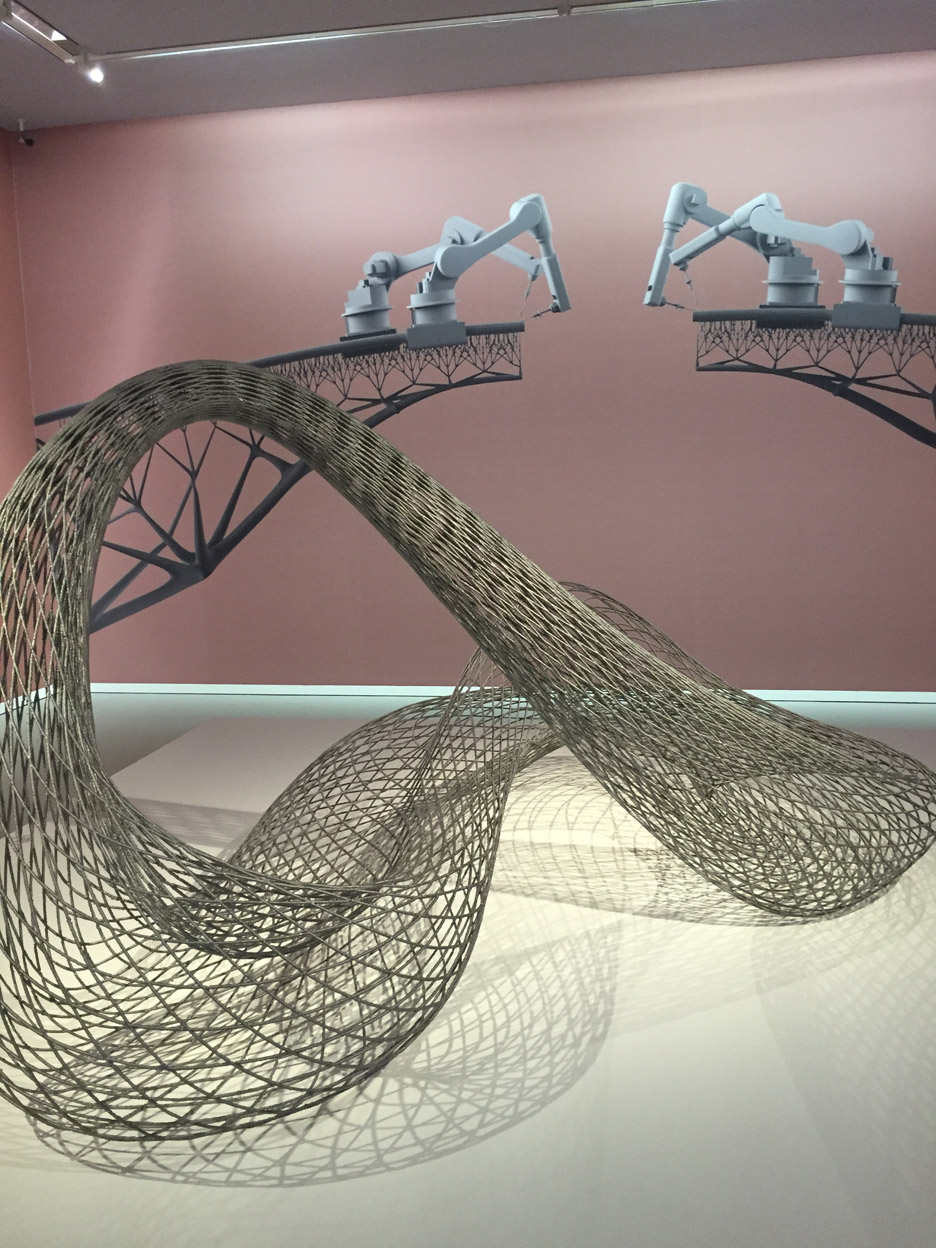
The exhibition brings together early and recent work by the designer, whose technology startup MX3D is planning to build the world's first 3D-printed bridge in Amsterdam.
Laarman, who already has work in gallery collections around the world, has created a sinuous metal sculpture for the exhibition. The piece was made using the same technology as the bridge, and is intended to showcase the manufacturing process.
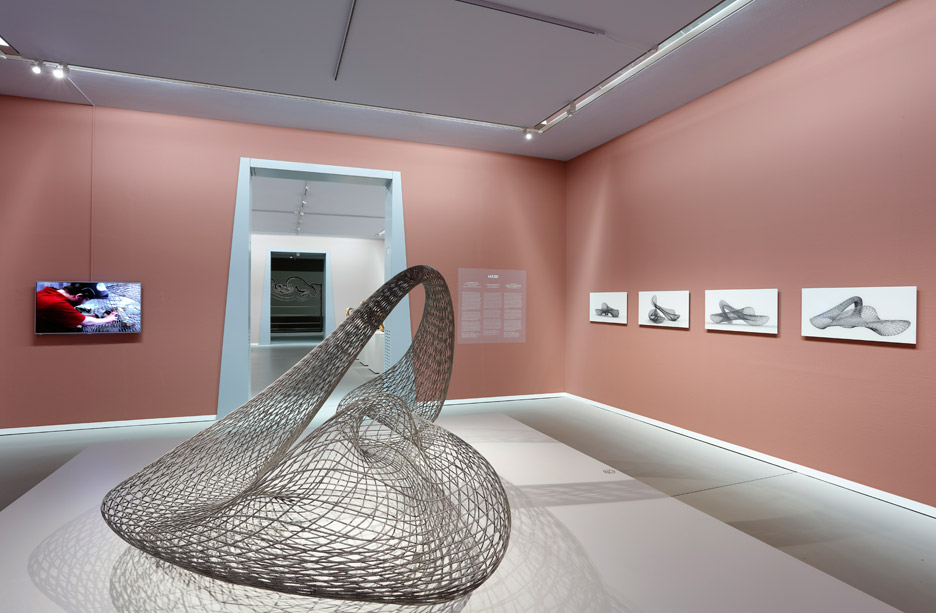
Also included is the designer's Reinventing Functionality radiator, which he created after graduating from Design Academy Eindhoven in 2003.
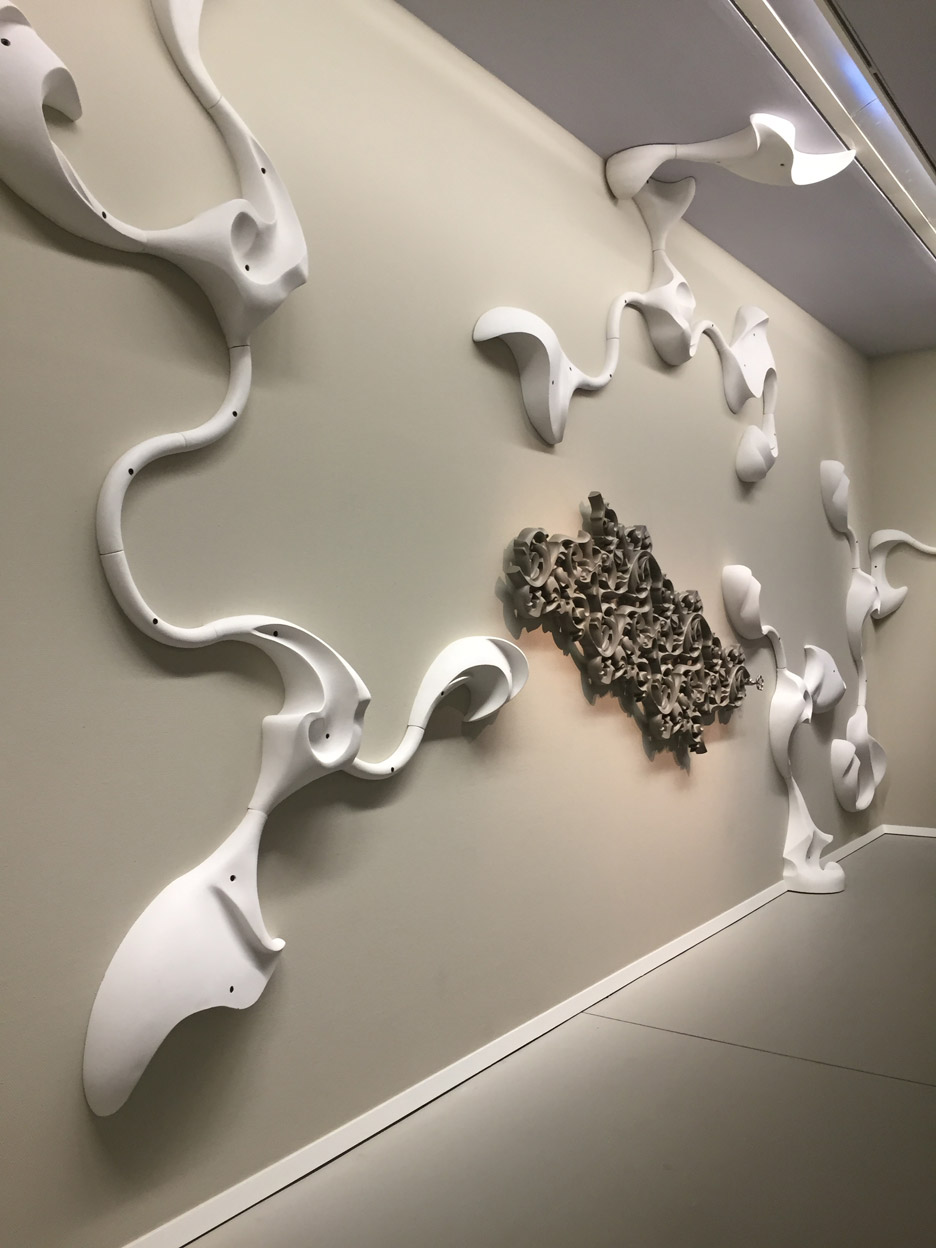
The sculptural device features intricate curled sections, intended to help disperse heat as well as offer an alternative to standard radiators.
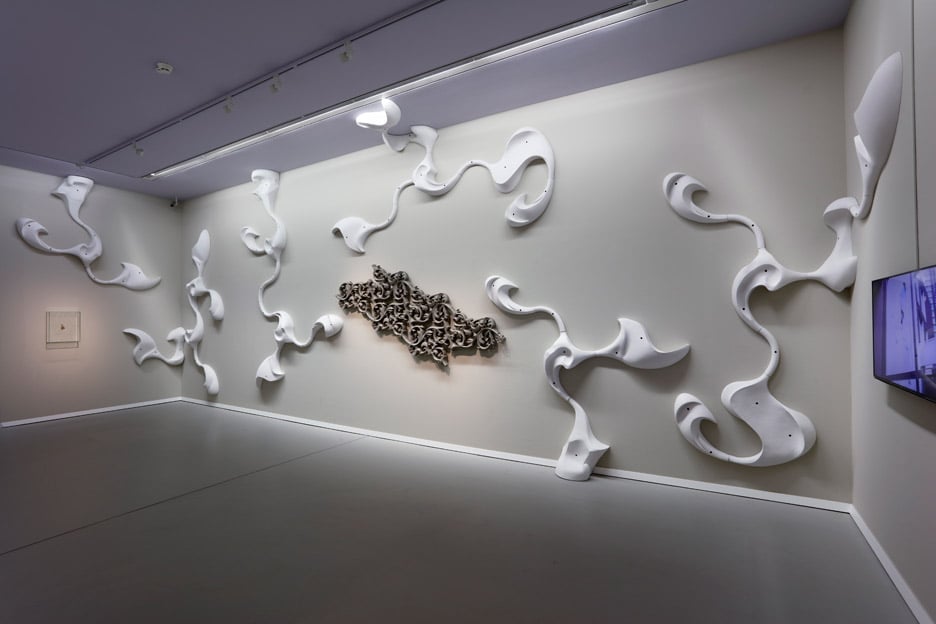
Laarman's Bone Chair is based on computer algorithms that replicate bone growth, and features thicker or thinner supporting sections to support the weight of the chair and its occupant.
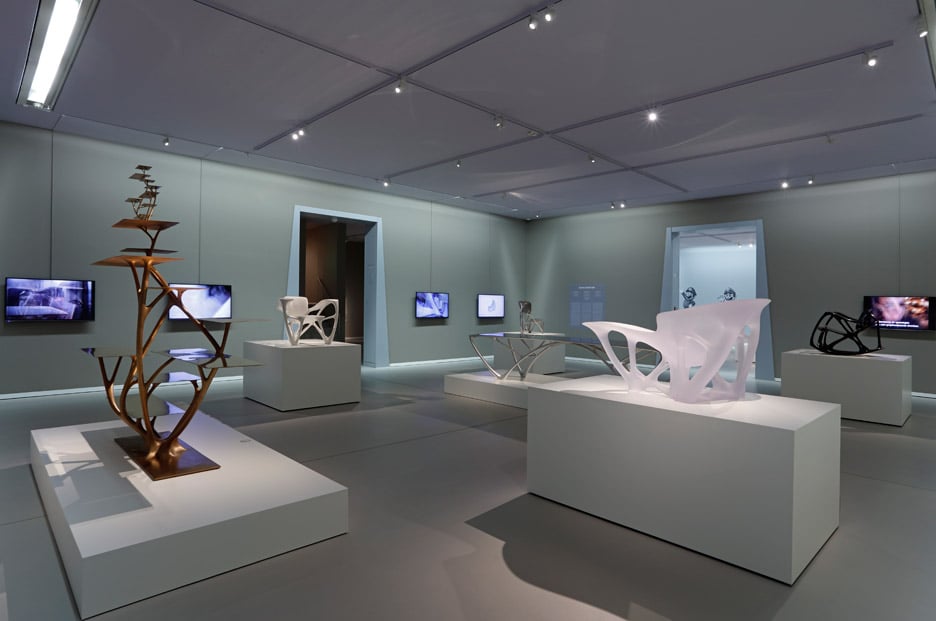
His Digital Matter series of tables that gradually become less pixellated is presented opposite images of video game character Mario.
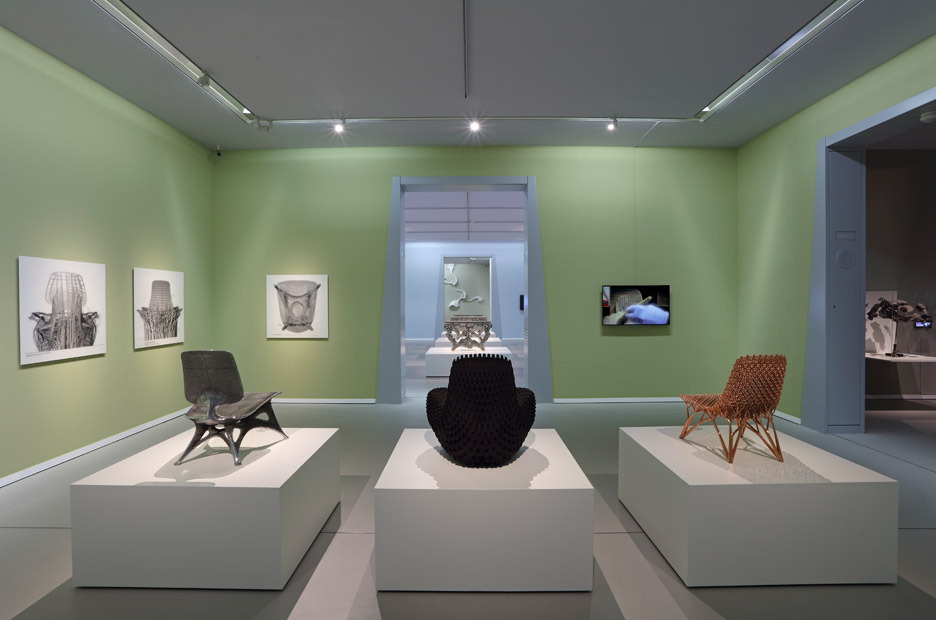
Laarman developed the pieces in 2010, after building a robotic assembly installation that would create ornamental tables based on a digital blueprint – starting with an eight-bit Rococo form language.
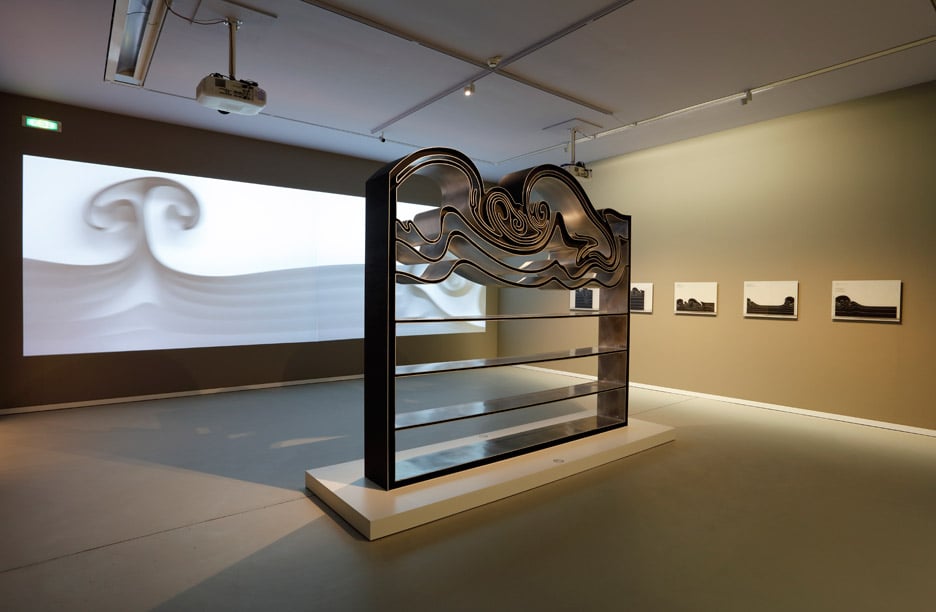
A collection of open-source chairs, designed from a single continuous piece and made in puzzle-piece and striped patterns, is on show. Laarman created the designs to be downloadable and open for modification and production by people around the world.
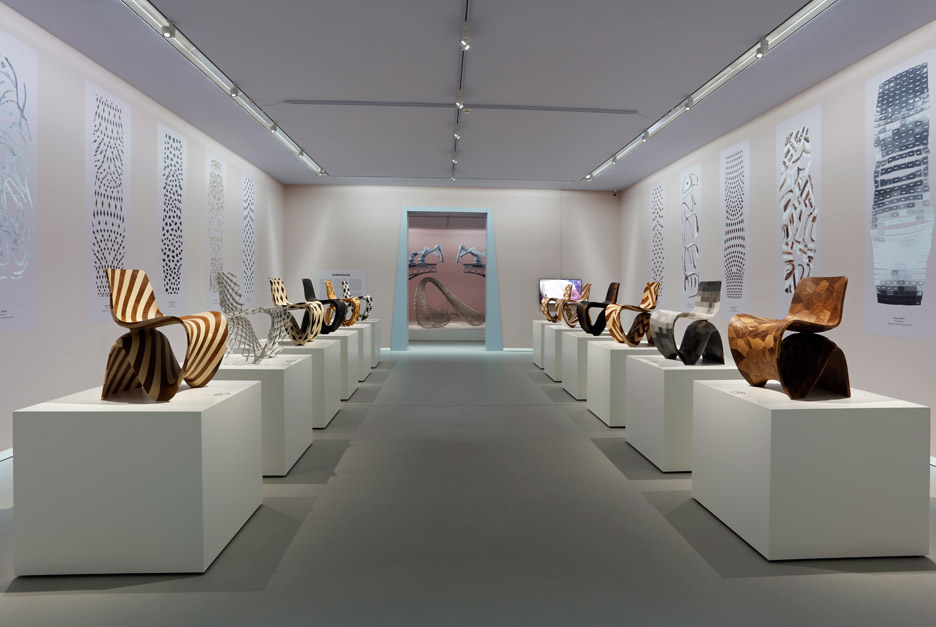
The exhibition opened on 22 November 2015 and continues until 10 April 2016.
Afterwards it will move to the Musée des Arts Décoratifs in Paris, the Cooper Hewitt Smithsonian Design Museum in New York, the High Museum of Art in Atlanta and the Museum of Fine Arts in Houston.